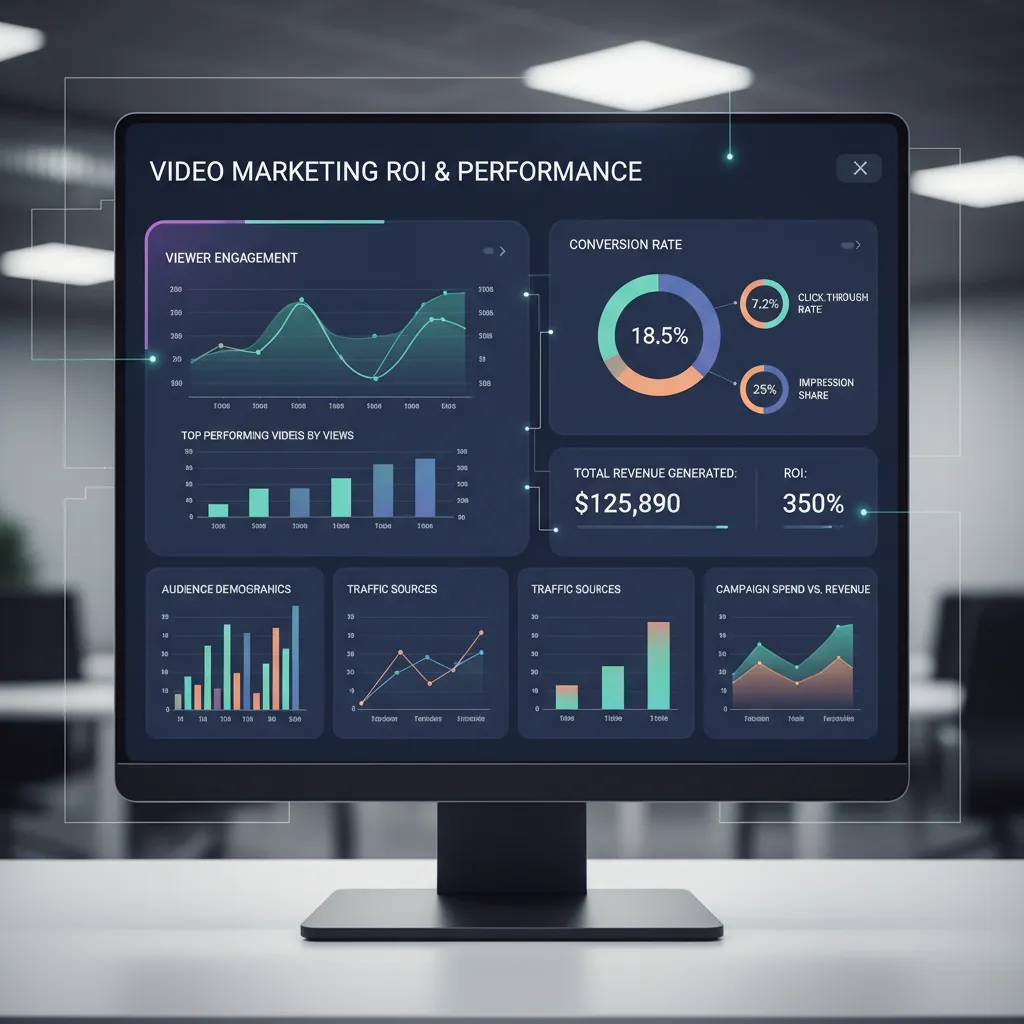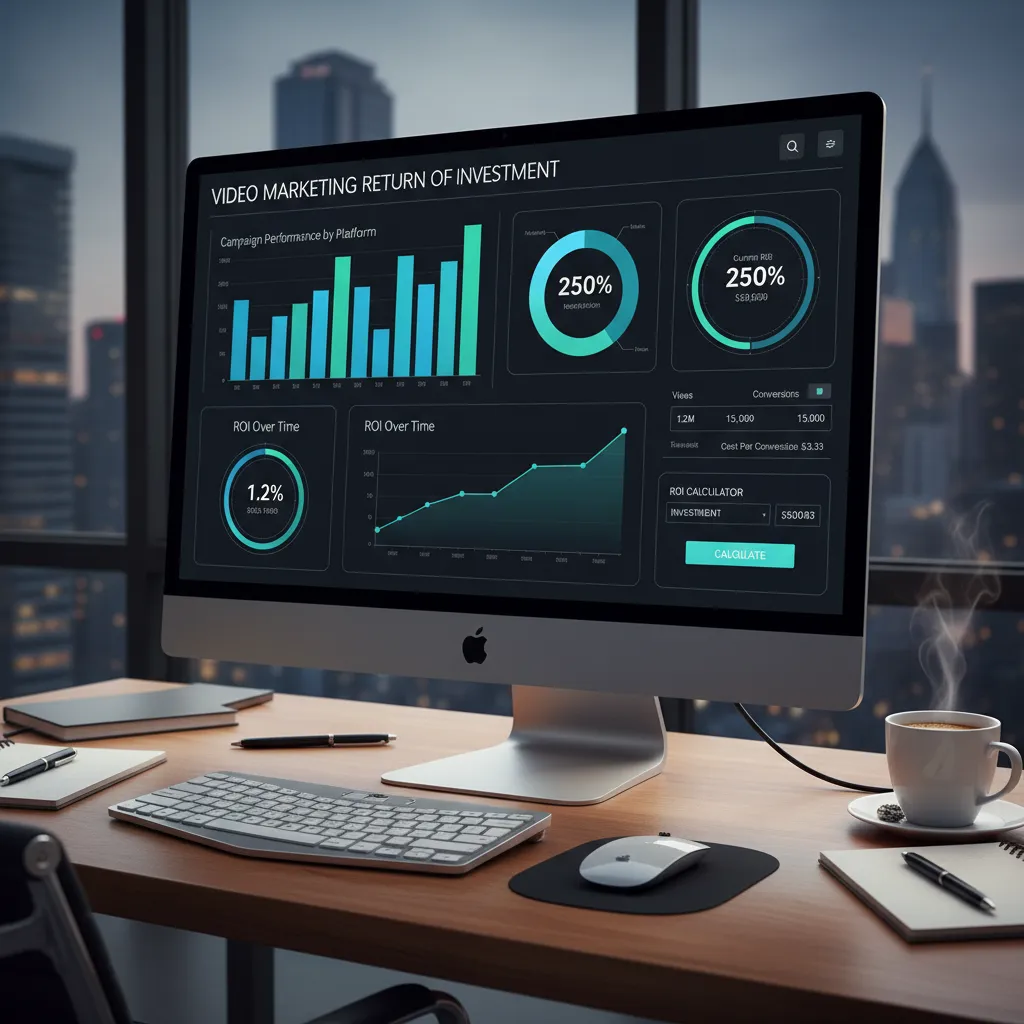
Video Analytics Mastery: Advanced Measurement and Performance Optimization for Maximum ROI
Transforming Video Data Into Actionable Business Intelligence
Video analytics represents the critical connection between content investment and measurable business results, enabling data-driven decisions that optimize performance, maximize ROI, and drive sustainable growth. At M&M Communications, we've analyzed video performance across diverse campaigns and platforms, understanding that successful video analytics isn't just about collecting data—it's about extracting inspirational and magical insights that transform content strategy and business outcomes through systematic measurement and optimization.
Understanding the Video Analytics Ecosystem
Modern video analytics encompasses multiple data sources, platforms, and measurement approaches that collectively reveal content performance, audience behavior, and business impact. Success requires integrating analytics from various sources—YouTube, social media platforms, website analytics, and CRM systems—to create comprehensive performance pictures.
The most valuable video analytics focus on connecting content performance to business objectives rather than simply reporting vanity metrics. Understanding how video content influences lead generation, customer acquisition, and revenue growth enables strategic optimization that drives meaningful business results.
Professional video analytics strategy balances immediate performance indicators with long-term trend analysis, enabling both tactical optimizations and strategic content direction adjustments based on data-driven insights.
Essential Video Performance Metrics
Engagement Metrics That Matter
View Duration and Watch Time provide the most meaningful engagement insights, revealing whether content maintains audience attention and delivers promised value. Average view duration indicates content quality, while total watch time reflects overall content reach and impact.
Audience Retention Curves show exactly when viewers drop off, enabling precise content optimization that addresses specific problem areas. High retention rates throughout video duration indicate strong content-audience alignment and effective presentation techniques.
Click-Through Rates (CTR) from thumbnails and titles measure content attractiveness and audience targeting accuracy. Improving CTR increases organic reach and reduces advertising costs across all platforms.
Engagement Rate Calculations combine likes, comments, shares, and saves to indicate content resonance and social proof generation. High engagement rates signal content that connects emotionally with audiences and encourages community building.
Conversion and Business Impact Metrics
Conversion Tracking measures how video content influences desired business actions: form submissions, product purchases, consultation requests, or subscription sign-ups. Proper conversion attribution requires sophisticated tracking systems that connect video exposure to business outcomes.
Lead Quality Assessment evaluates whether video-generated leads convert at higher rates than leads from other sources. High-quality leads validate content strategy while poor-quality leads indicate targeting or messaging issues.
Customer Acquisition Cost (CAC) from video campaigns enables ROI calculation and budget optimization decisions. Compare video CAC against other marketing channels to optimize resource allocation and strategy focus.
Lifetime Value (LTV) Analysis reveals whether video-acquired customers provide higher long-term value than customers from other sources, justifying video marketing investment and budget allocation decisions.
Platform-Specific Analytics Mastery
YouTube Analytics Deep Dive
YouTube Analytics provides comprehensive data about audience behavior, content performance, and channel growth patterns. Key metrics include impressions and click-through rates that show how often content appears and generates clicks from search and suggested video placements.
Audience Demographics reveal who watches your content, enabling better targeting and content development decisions. Age, gender, geographic location, and device usage patterns inform content strategy and advertising optimization.
Traffic Sources Analysis shows how viewers discover content: YouTube search, suggested videos, external websites, or direct links. Understanding traffic sources enables optimization of discovery strategies and content distribution approaches.
Revenue Analytics for monetized channels provide insights into ad performance, channel membership growth, and Super Chat earnings that connect content performance directly to revenue generation.
Social Media Video Analytics
Instagram Insights for video content include reach, impressions, profile visits, and website clicks that indicate content effectiveness for brand awareness and traffic generation. Stories metrics show completion rates and forward/backward taps that reveal content engagement patterns.
Facebook Video Analytics provide detailed audience retention graphs, demographic breakdowns, and engagement patterns that inform content optimization and audience targeting strategies.
TikTok Analytics focus on completion rates, shares, and audience growth metrics that indicate content virality potential and community building effectiveness. Profile views and follower growth show broader brand impact beyond individual video performance.
LinkedIn Video Analytics emphasize professional engagement metrics like company page follows, employee advocacy, and lead generation that align with B2B marketing objectives and professional relationship building.
Advanced Analytics Implementation
Multi-Platform Attribution Modeling
Advanced video analytics requires attribution models that track customer journeys across multiple touchpoints and platforms. Customers often interact with video content on multiple platforms before converting, making single-touch attribution inadequate for accurate ROI calculation.
Implement tracking systems that connect video views on social media to website visits, email sign-ups, and eventual purchases. This comprehensive tracking reveals video content's role in complex customer journeys and supports accurate budget allocation decisions.
Use UTM parameters, pixel tracking, and CRM integration to create customer journey maps that show how video content influences different conversion stages and business outcomes.
Cohort Analysis and Audience Segmentation
Analyze video performance across different audience segments to identify content that resonates with specific demographic groups, interests, or behavior patterns. Segment analysis reveals optimization opportunities and content development priorities.
Track audience cohorts over time to understand how video exposure influences long-term customer behavior, retention rates, and lifetime value development. Cohort analysis enables strategic decisions about content investment and audience development.
Compare performance metrics across different audience segments to identify high-value audiences and content approaches that drive the best business results for specific target markets.
Analytics Tools and Technology Integration
Google Analytics 4 Video Tracking
GA4 provides enhanced video tracking capabilities that measure how embedded videos contribute to website performance, user engagement, and conversion objectives. Configure video events tracking to measure play rates, completion rates, and engagement depth.
Set up conversion goals that connect video engagement to business outcomes, enabling ROI calculation and content performance evaluation within broader website analytics context.
Use GA4's audience building features to create remarketing audiences based on video engagement behavior, enabling targeted follow-up campaigns and personalized content delivery.
Third-Party Analytics Platforms
Wistia Analytics provide detailed heatmaps showing exactly which video segments generate the most engagement, enabling precise content optimization and A/B testing of different video elements.
Vidyard Analytics focus on business-oriented metrics like lead generation, sales attribution, and ROI calculation that connect video performance directly to revenue outcomes and business growth.
Sprout Social and similar tools aggregate social media video performance across multiple platforms, providing consolidated reporting and cross-platform comparison capabilities.
Performance Optimization Through Data Analysis
A/B Testing and Experimentation
Systematic A/B testing enables data-driven optimization of video elements: thumbnails, titles, descriptions, content length, and calls-to-action. Test individual elements systematically to identify specific improvements rather than making multiple changes simultaneously.
Develop testing schedules that allow sufficient data collection time while enabling rapid iteration and improvement. Document testing results to build knowledge bases that inform future content development and optimization strategies.
Use statistical significance testing to ensure optimization decisions are based on meaningful data differences rather than random variation or insufficient sample sizes.
Content Performance Benchmarking
Establish performance benchmarks based on historical data, industry standards, and competitive analysis that guide content development and optimization decisions. Benchmarks provide context for evaluating performance and setting realistic improvement goals.
Track performance trends over time to identify seasonal patterns, audience behavior changes, and content fatigue that inform strategic planning and content calendar development.
Compare content performance across different topics, formats, and presentation styles to identify successful patterns that can be replicated and scaled for consistent results.
ROI Calculation and Business Intelligence
Comprehensive ROI Methodology
Calculate video marketing ROI by including all production costs, distribution expenses, and internal resource allocation while accurately attributing revenue and business value generated through video content exposure.
Include both direct conversion value and indirect benefits like brand awareness improvements, customer retention increases, and referral generation that contribute to long-term business value but may be difficult to attribute directly.
Develop ROI calculation frameworks that account for different video objectives: awareness campaigns focus on reach and engagement metrics, while conversion campaigns prioritize direct revenue attribution and customer acquisition costs.
Budget Allocation Optimization
Use analytics insights to optimize budget allocation across different video types, platforms, and production approaches based on proven performance data rather than assumptions or preferences.
Identify high-performing content characteristics that justify increased investment while discontinuing or modifying approaches that consistently underperform relative to business objectives and resource investment.
This data-driven approach aligns with M&M Communications' philosophy: we don't make budget recommendations based on creative preferences alone. Instead, we use analytics insights to guide investment decisions toward approaches that demonstrate measurable business impact and sustainable growth potential.
Predictive Analytics and Future Planning
Trend Analysis and Forecasting
Analyze historical performance data to identify trends, seasonal patterns, and growth trajectories that inform future content planning and budget allocation decisions. Predictive analytics enable proactive strategy adjustments rather than reactive responses to performance changes.
Use machine learning tools and statistical analysis to identify content characteristics and optimization approaches that predict higher performance, enabling more strategic content development and resource allocation.
Monitor emerging platform features, algorithm changes, and industry trends that may impact future video performance, enabling strategic adaptation and competitive advantage maintenance.
Competitive Intelligence Integration
Monitor competitor video performance using tools like Social Blade, VidIQ, or TubeBuddy to identify successful strategies, content gaps, and market opportunities that inform strategic content development.
Analyze competitor content performance patterns to identify successful approaches that can be adapted for your brand while maintaining authentic voice and unique value proposition.
Track competitor analytics changes and strategy shifts that may indicate broader market trends or algorithm updates that affect video marketing effectiveness.
Reporting and Stakeholder Communication
Executive Dashboard Development
Create executive-level dashboards that connect video performance metrics to business objectives and strategic goals rather than focusing solely on content performance indicators. Executives need to understand how video investment contributes to broader business success.
Include trend analysis, ROI calculations, and competitive benchmarking that provide context for video performance and justify continued investment or strategic adjustments.
Automate dashboard updates and reporting schedules that provide regular stakeholder communication without requiring manual data compilation and analysis.
Actionable Insights Communication
Transform analytics data into actionable recommendations that guide content development, budget allocation, and strategic decision-making rather than simply reporting performance numbers.
Connect analytics insights to specific optimization opportunities, content development priorities, and strategic recommendations that stakeholders can implement immediately for improved results.
Future Trends in Video Analytics
AI-Powered Analytics and Insights
Artificial intelligence increasingly enables automated pattern recognition, predictive analytics, and optimization recommendations that identify opportunities human analysis might miss.
Real-Time Optimization
Advanced analytics platforms enable real-time content optimization based on immediate performance feedback, allowing tactical adjustments during campaigns rather than post-campaign analysis only.
Conclusion: Building Data-Driven Video Success
Video analytics mastery requires systematic measurement, sophisticated analysis, and strategic optimization that connects content performance to meaningful business outcomes. Success comes from understanding not just what happened, but why it happened and how to replicate successful results systematically.
At M&M Communications, we understand that effective video analytics isn't about collecting impressive data sets—it's about extracting inspirational and magical insights that transform content strategy, optimize resource allocation, and drive sustainable business growth through data-driven decision making.
The future belongs to video marketers who can master advanced analytics while maintaining focus on creating genuinely valuable content that serves audience needs and achieves business objectives. Invest in comprehensive video analytics capabilities today, and discover how data-driven optimization can transform video marketing from creative experimentation into predictable business growth engines.


